Instructor Insights pages are part of the OCW Educator initiative, which seeks to enhance the value of OCW for educators.
Course Overview
This page focuses on the course 6.811 Principles and Practice of Assistive Technology (PPAT) as it was taught by William Li, Grace Teo, and Prof. Robert Miller in Fall 2014.
PPAT is an interdisciplinary, project-based course in which small teams of students work closely with a person with a disability in the Cambridge area to design a device, piece of equipment, app, or other solution that helps the client live more independently. Over the course of the term, each team meets with its client, iterates through multiple prototypes, and learns about the challenges and realities of designing assistive technologies for people with disabilities. The course also includes lectures on principles of successful Assistive Technology design, perspectives from people with disabilities and Assistive Technology makers and users, design processes and human factors, and social, economic, and ethical perspectives on disability.
Course Outcomes
Course Goals for Students
- Understand principles and complexities of Assistive Technology design and engineering
- Learn about the challenges and realities of people with disabilities and become equipped as an advocate
- Gain experience managing a team-based design/engineering project and working with a real client
In the following video, the instructors introduce themselves and share how their interests and experiences led them to become involved with the course.
Instructor Interview: Meet the Educators
In the following videos, William Li and Grace Teo describe various aspects of how they taught 6.811 Principles and Practice of Assistive Technology.
- Instructor Interview: Course History
- Instructor Interview: Collaborating with Clients
- Instructor Interview: The Role of Mentors
- Instructor Interview: Teaching Students to Learn from Failure
- Instructor Interview: Assessing Students’ Learning
- Instructor Interview: Making Learning Public
- Instructor Interview: Advice for Educators
- Instructor Interview: Learning About Being an Educator
In the following videos, students share insights about their experiences in 6.811 Principles and Practice of Assistive Technology.
Curriculum Information
Prerequisites
Permission of instructor
Requirements Satisfied
6.811 satisfies one of two Advanced Undergraduate Study requirements, and one lab requirement in the Department of Electrical Engineering and Computer Science.
Offered
PPAT has been offered every fall semester since 2011.
Assessment
The students' grades were based on the following activities:
 10% Video documenting either client challenge or design process
10% Video documenting either client challenge or design process 20% Mid- and final-semester presentations
20% Mid- and final-semester presentations 20% Online, open-source documentation and press release (including high quality photographs)
20% Online, open-source documentation and press release (including high quality photographs) 30% 4 blog posts, attendance, discussion participation, lab check-ins (and mentor feedback)
30% 4 blog posts, attendance, discussion participation, lab check-ins (and mentor feedback) 20% Client and peer feedback
20% Client and peer feedbackRubrics
The instructors used a rubric to assess students’ blog posts (PDF). Guest panelists used an evaluation form to assess students’ mid- and final-semester presentations (PDF). Clients used an assessment guide to provide students with feedback (PDF) about their work in the course.
Instructor Insights on Assessment
Student Information
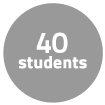
Breakdown by Major
Many students tend to be from Mechanical Engineering or Electrical Engineering and Computer Science, but students from all majors are welcome. This course is a good fit for students interested in public service, user-centered product design, working closely with a client with a disability (potentially in consultation with their caregivers and/or clinicians), and tackling difficult, real-world problems.
Typical Student Background
During the Fall 2014 offering of the course, several students had siblings or other family members with disabilities. These personal experiences informed their work in the course.
During an average week, students were expected to spend 11 hours on the course, roughly divided as follows:
Lecture
- Met 2 times per week for 1 hour per session; mandatory attendance.
- Lecture sessions included discussions and guest speakers.
Lab
- Met 2 times per week for 2 hours per session; mandatory attendance.
- Teams engaged in hands-on learning.
- Some of the lab periods provided time for teams to discuss and work on their projects with technical mentors.
Out of Class
- Teams met weekly with their clients to understand their needs, define a problem that could be solved with assistive technology, develop evaluation metrics, and test multiple iterations of prototypes. The client meetings, design work, and documentation comprised the majority of work required outside of class.
- Deliverables for the project included a written contextual inquiry report, a video documenting the client’s challenge or the design process, and midterm and final presentations.
Semester Breakdown
| WEEK | M | T | W | Th | F |
|---|---|---|---|---|---|
| 1 |  |  |  |  |  |
| 2 |  |  |  |  |  |
| 3 |  |  |  |  |  |
| 4 |  |  |  |  |  |
| 5 |  |  |  |  |  |
| 6 |  |  |  |  |  |
| 7 |  |  |  |  |  |
| 8 |  |  |  |  |  |
| 9 |  |  |  |  |  |
| 10 |  |  |  |  |  |
| 11 |  |  |  |  |  |
| 12 |  |  |  |  |  |
| 13 |  |  |  |  |  |
| 14 |  |  |  |  |  |
| 15 |  |  |  |  |  |
| 16 |  |  |  |  |  |
 No classes throughout MIT
No classes throughout MIT Lecture session
Lecture session Guest speaker
Guest speaker Client meetings (scheduled independently)
Client meetings (scheduled independently) Assignment due date
Assignment due date No class session scheduled
No class session scheduled Labs
Labs Field trip - Abilities Expo (Boston)
Field trip - Abilities Expo (Boston) Blog post due
Blog post due Final presentations
Final presentations
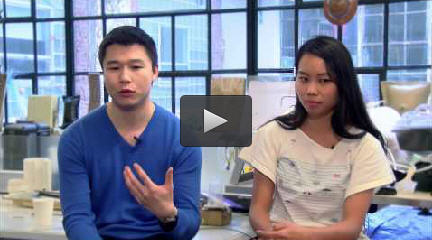
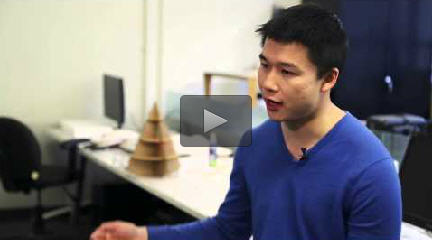
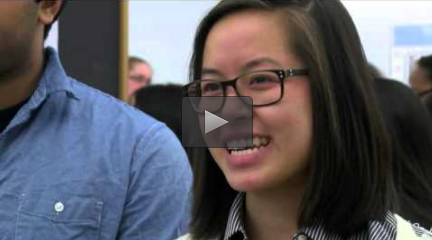
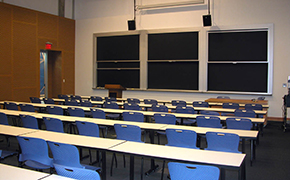
 Room 1 of 2
Room 1 of 2 